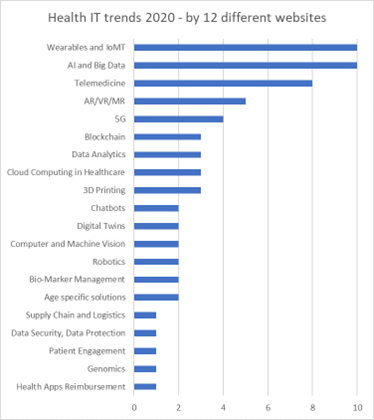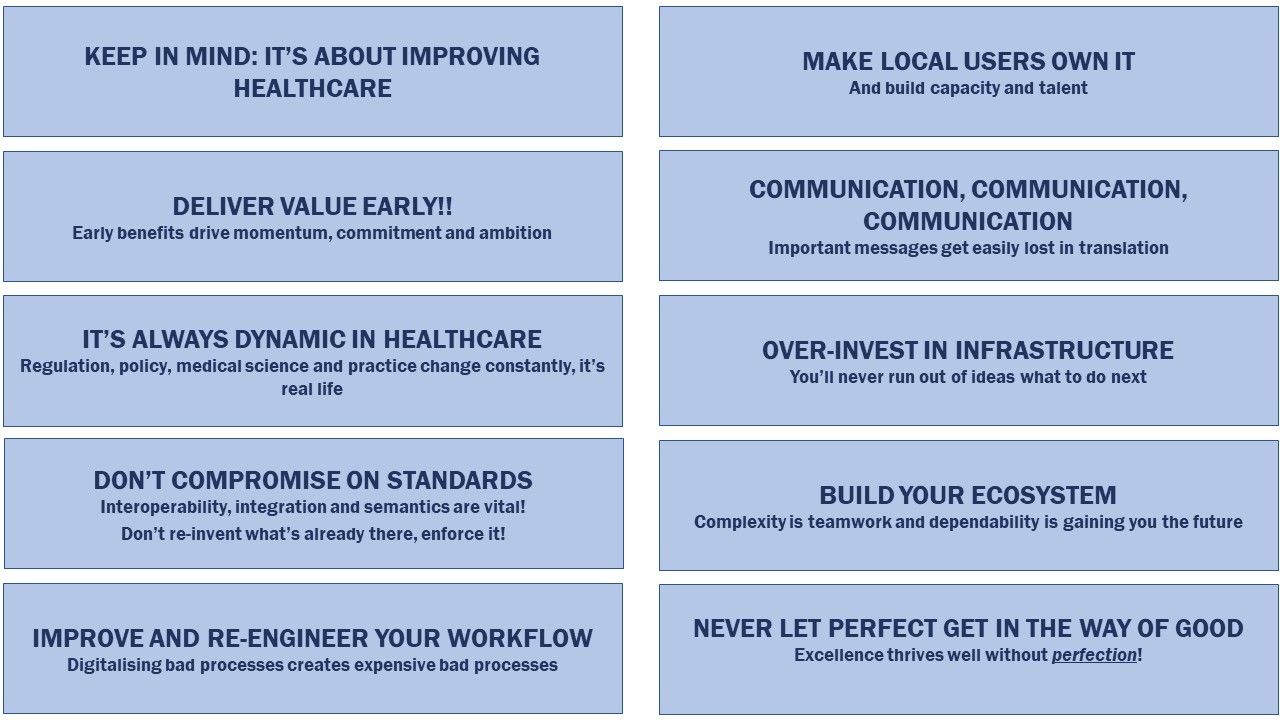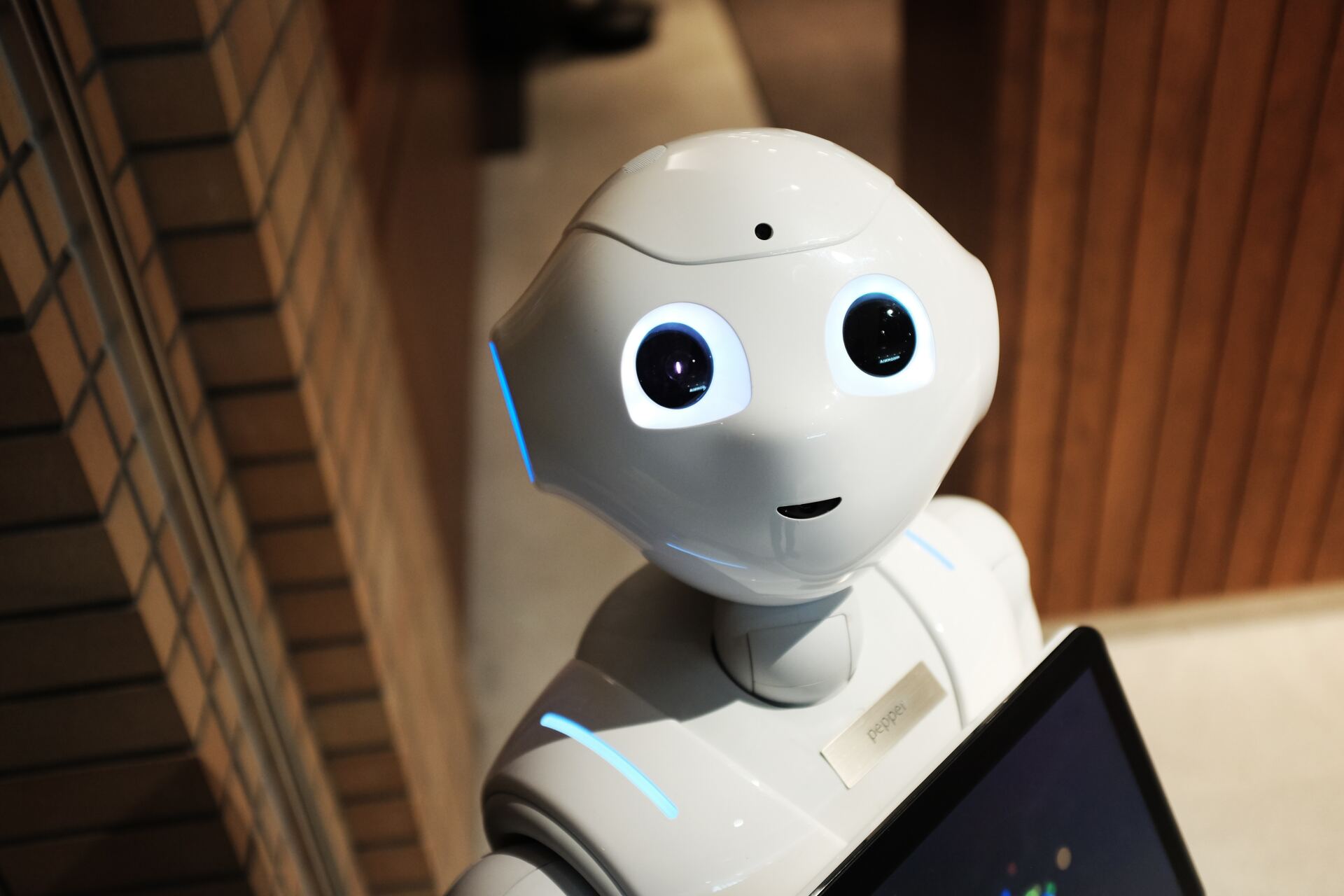Technology and IT Trends in Healthcare 2020
This is a subtitle for your new post

It is not an exact science attempting to forecast future trends. Yet many stakeholders welcome the assistance that the trend analysis industry brings - giving some order and insight into the noisy jungle of innovation, disruption and opportunities.
Healthcare technology is no different in this respect.
When reviewing and collating the various trend predictions for healthcare technology there are very few surprises. “IoT and Wearables will take over”, “AI and big data are going to run the world in healthcare too”, all sorts of realities will help navigate the world and “5G will real-time everything in 2020”.
Despite the striking similarity of healthcare technology trends with the global hypes and buzz-words, it is still meaningless to ask whether these trends are merely a product of the industry echo-chamber.
When we reviewed these “supposed trends” in healthcare technology, we were disappointed to find several stark omissions: while everyone is excited about all of the new gadgets and toys, there does not appear to be any clarity on what the applied use cases and workflow trends are!
Why!
We strongly believe technology and its trends should be rooted in the practical benefits they provide. Otherwise they are simply just “stuff” – interesting it their own right, but of no real value or use. That may seem a bit unfair towards many of the emerging technology solutions, but, without use cases, technology lacks purpose.
Use Cases
Practical application of technology does exist. In demographics and healthy longevity (both on the patient side as well as on the provider side (flatlining supply in funding and workforce), in personalized medicine and genomics, and an exponentially growing suite of technology options, from robotics, 3D printing, sensors and machine vision.
The first will drive significant productivity increases in healthcare after what has been a long period of production increase only. We will see more quality to be asked for per entity of funds, rather than more volume per entity of nurse.
The second is suddenly giving medical and clinical data value, which has been long anticipated but, in all reality, so far never been awarded. (The only value so far was in billing or reimbursement relevant data.)
We are entering an era, where medical big data (as well as small data) will become critical for decision support, assessing, filtering and planning for personalized treatments, operational process improvements and better patient flow (rather than patient output). And, last not the least, will allow to move all the great ideas for a more digitally or data enabled healthcare environment into reality.
Telemedecine
If we review technology trends in healthcare through the prism of a demographics driven pull for productivity and an innovation driven push (pharma and diagnostics) for more data, they present themselves in a different light.
Driven by the increasing need for productivity, especially in the sense of more quality per unit of input, we strongly believe telemedicine will indeed become a mega-trend in healthcare. Few use cases, if any, have such significant productivity and quality reserves to offer like telemedicine in its widest sense.
If that is true, then any supporting and enabling technology which will enhance and elevate the use case offer of telemedicine will benefit from that trend.
Wearables
Wearable glucometers will not catapult remote monitoring forward. But solutions that offer easy deployment (who has ever tried to reliably explain how to connect a Bluetooth device to one’s grand-parents knows what we mean), harmonized data, “noise” filtering and actionable workflow (decision) support, will.
Sensors (wearables, IoMT), when part of an end to end workflow – and companies who offer it – will indeed start revolutionizing prevention and early detection.
AI
Use cases are also emerging for AI. Not because “artificial” is suddenly so much more “intelligent” than it was five years ago, but because there are practical applications in personalized medicine, pharma, medical devices, prevention or decision support, that ask for smart help.
We do not believe that AI has moved much past what we used to call “pattern recognition” in healthcare yet (other than the consumer or advertising market, healthcare is not an area where 80% or even 99% accuracy is good enough), but pattern recognition is a decidedly good enough start. Also, we now have more and more valid digital clinical data available. Companies that drive solutions around normalizing, harmonizing, aggregating and (underestimated but importantly) curating data will be at the core of this trend. AI as a buzzword will not change healthcare more than a step-counter does, but companies that find ways to aggregate data from the usual islands in healthcare, and turn it into information and actionable tasks will.
Data Analytics
There is an area that we believe is underestimated by both trend prophets as well as technology companies alike: data analytics. As an industry we continue to miss the opportunity for good old- fashioned analysis of operational data which we generate in all the various systems and use it to improve efficiency and effectiveness of processes in the healthcare delivery. That may be because we are so focussed on enabling technology that we keep overlooking the soft benefits of data analytics. It may also be because of a still quite limited demand caused by a change-hesitance (sometimes even resistance) of clinical processes. We do however predict (and hope) that companies who understand the value of the data generated and collected in their solutions, and who invest in turning findings into actionable insights and change management, will be surprised by the impact this will have on adoption, retention and recurring revenues.
Summary
There is no doubt that IoMT and AI will play an increasing and important role in healthcare. Without enabling technologies like 5G, Chatbots, Robotics and others, not to mention data security and protection solutions innovation will soon run out of steam. If trend analysis in healthcare does not move beyond repeating buzzwords though, we may altogether miss the opportunities. Wearable sensors which patients struggle to connect, and which just create more noise will be quickly rejected by providers. However, solutions that turn the intersection of enabling, producing, analysing and filtering technology into relevant workflows however will push more open doors than ever before.
Healthcare is at the brink of a next phase in digitalization. If we focus on use cases, workflows and benefits and avoid being seduced by brilliant “gadgets”, we will see a truly new generation of healthcare provision and fulfil generation-old promise after all.










